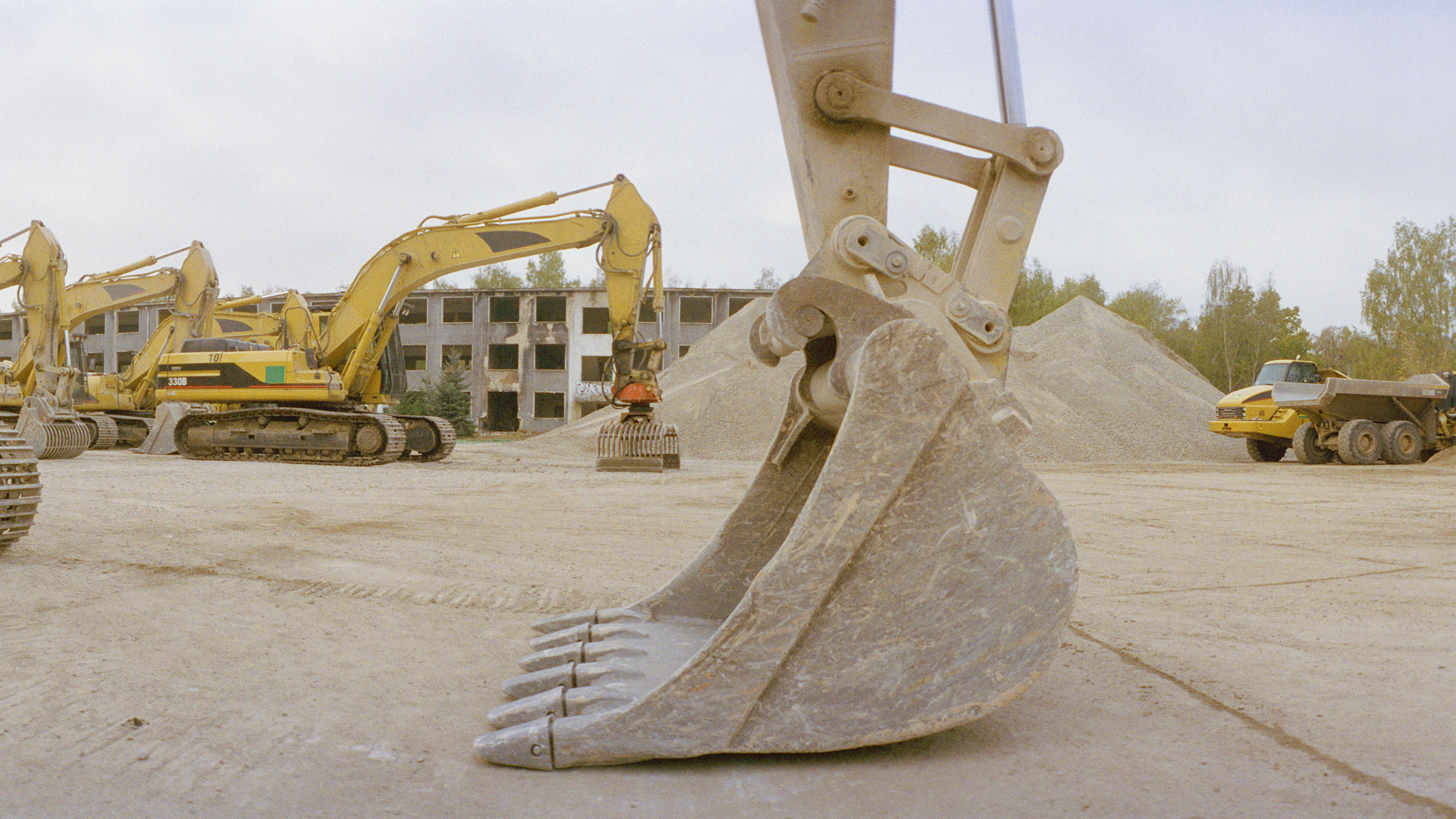Few sectors in our economy play the role of canary quite like construction does. That’s because it takes a certain level of confidence in the future to commit the time and capital needed to turn shovels and swing hammers to build anything, whether a house, storefront, office tower, bridge, windmill, or countless other structures.
That’s why the Minneapolis Fed reached out to construction firms to find out the impact to date that the COVID-19 outbreak has had on the sector in Minnesota. The Minneapolis Fed sent surveys (via email) to businesses through partnership with a dozen construction-related business associations in Minnesota. The survey was executed from Monday, March 23, to Wednesday, March 25. It received almost 550 responses.
In general, the survey found that the coronavirus outbreak has had an immediate impact on the sector in Minnesota, delaying projects and affecting workers and capital expenditures while souring the outlook for 2020. These results are similar to those from a Minneapolis Fed survey of businesses across the Ninth District, conducted from March 18-20.
Hurry up and stop
In normal times, it’s rare for project owners to want to slow down construction activity that has otherwise been given the green light. But these are not ordinary times, and COVID-19 has given rise to a notable pause in many construction projects.
More than half of respondents reported that they’ve had projects delayed that were either active or expected to start in the coming month. The scale of delays varied among respondents, however, with some seeing only a small number of delayed projects; 10 percent claimed a significant number.
One Twin Cities firm said that it has had projects for new retail, medical office, and warehouse space “put on indefinite hold.” It has also had two projects reduced in scope and another shut down “to protect the occupants in another area of the building” for social distancing reasons. A roofing contractor said “three different sizable commercial reroof projects” were set to start but “put on hold due to the current situation.”
The status of future projects was tough to read, respondents said. Nearly one in five said they were unsure about projects whose start was more than a month out. The good news, at least for now, was that confirmed delays on future projects were also lower.
Delays were reported for a wide array of projects, from gaming to government, modular and stick-built homes, and remodeling and new builds, along with commercial, industrial, and energy projects.
The reasons for delays are many, but the main culprit was uncertainty; 56 percent of delays were attributed to the general concern of the owner regarding project viability. But delays were also resulting from a shortage of labor and materials—both of which are exacerbated by the outbreak—as well as a lack of availability of necessary government workers, who play an active role in construction projects by issuing permits, conducting inspections, and performing other tasks. Many are following shelter-in-place orders, unable to give the necessary approvals to keep work moving.
A firm providing professional services to subcontractors said it had reached out to 10 clients and heard a range of reasons for delays. In maybe the most ironic case, one remodeling project was reportedly put on hold because the facility was being considered for repurposing into a COVID-19 care facility.
Concrete spillovers
Project delays, in turn, have broad ripple effects. Construction workforces have taken an immediate hit, with 30 percent of respondents saying they have cut workers; within the next month, that figure is expected to reach almost half.
COVID-19 is having an even more stark effect on capital expenditures. Already, more than half of respondents said they have cut back on capital expenditures like equipment; the expected rise over the next six months is fairly muted—but, again, likely because respondents were more unsure about how this outbreak will unfold over the coming months.
A construction equipment company said that “several jobs have told us to hold new orders and wait for further instruction.” A central Minnesota contractor noted, “There is a lot of uncertainty and change going on this year. Those two typically slow the flow of money toward capital expenditures.”
Construction projects often entail an enormous and diverse supply list. Tariffs and other trade policy had already made some overseas supply chains more complicated. Coronavirus adds even more kinks to that chain, both overseas and domestically, according to firms.
Still, supply chain concerns lag those related to customer demand. Nearly two-thirds of respondents reported negative effects of coronavirus on demand for construction projects; that sentiment is expected to intensify further in the future.
Not all firms or subsectors in the construction field reported identical effects from the current outbreak. The survey offers some general insights based on the trade group that respondents self-identified into.
For example, among respondents from the Associated General Contractors of Minnesota, one-third saw delays in active or near-term projects. That compares with more than 60 percent for respondents from the American Institute of Architects Minnesota. Due to differing response rates among the 12 partnering organizations, however, such results cannot necessarily be considered representative.
The largest subgroup of responders (194) came from Housing First Minnesota, which represents home builders, mostly in the Twin Cities. Compared with respondents from other industry associations, this group also saw slightly more elevated rates of delayed projects and negative effects on customer demand, as well as supply chain difficulties. But Twin Cities home builders had mostly similar rates to the overall group when it came to staffing, capital expenditure reductions, and a souring overall outlook.
Lucky us?
Given all of these factors, it’s not hard to predict where group optimism lies among construction firms. Earlier this year, before coronavirus, respondents had a notably optimistic outlook for 2020; seven in 10 had a positive outlook, and a large majority of this group had a very optimistic view for the upcoming year.
But COVID-19 has since wreaked havoc on that view; more than eight in 10 had a pessimistic outlook for 2020, and fewer than one in 10 had any optimism.
The sector has caught a few modest breaks recently, the most notable being the designation as an essential industry by Gov. Tim Walz, allowing firms to continue working rather than shutting down and having workers sent home to shelter in place.
Warming temperatures will also pull the tarp off job sites, making them safer places for work to continue. One respondent pointed to a project in Bemidji, “where winter is still raging, and work needs to take place under a temporary, heated enclosure”—tight confines that some workers understandably choose not to enter, causing project delays.
How COVID-19 affects the state’s construction sector—and the Ninth District economy in general—going forward will be a matter closely tracked (and written about) by the Minneapolis Fed. What’s clear at the moment is that COVID-19 has had a large and negative effect to date, with the expectation that short-term conditions will likely worsen, but much uncertainty remains about what lies ahead.
This survey was also conducted immediately before the final, $2 trillion emergency aid package was passed by Congress, and the Minneapolis Fed will be assessing the economic impact and efficacy of the stimulus package on construction and other sectors of the Ninth District economy.
For now, respondents made clear that their financial margin is narrowing quickly under these extraordinary circumstances. “The jobs aren’t coming in,” said a Twin Cities plumbing firm. “The phone isn’t ringing. That means the plumbers aren’t going out.”
A contractor in northeastern Minnesota said that before coronavirus, the firm was very optimistic about the coming year. That has flipped 180 degrees to very pessimistic. “Contracts that were going to be signed now are not at all.” The respondent said much of their work came from the restaurant industry and, given its recent, indefinite shutdown, “we are laying off more employees each week.”
This survey was conducted with the assistance of Aggregate & Ready Mix Association of Minnesota, American Council of Engineering Companies of Minnesota, American Institute of Architects Minnesota, Associated Builders and Contractors of Minnesota, Associated General Contractors of Minnesota, Housing First Minnesota, Minnesota Asphalt Pavement Association, Minnesota Builders Exchange, Minnesota Construction Association, Minnesota Electrical Association, Minnesota Subcontractors Association, and Minnesota Utility Contractors Association.
Ron Wirtz is a Minneapolis Fed regional outreach director. Ron tracks current business conditions, with a focus on employment and wages, construction, real estate, consumer spending, and tourism. In this role, he networks with businesses in the Bank’s six-state region and gives frequent speeches on economic conditions. Follow him on Twitter @RonWirtz.






